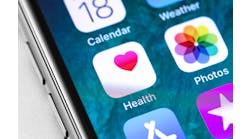The most challenging aspect of Stage 2 of meaningful use is the one that requires providers to engage their patients.
This isn’t a grandiose statement without basis. It’s confirmed fact. A recent study published in Health Affairs highlighted this reality. Using data from the 2013 American Hospital Association (AHA) Annual Survey of Hospitals–IT supplement, a host of researchers, led by Julia Adler-Milstein, Ph.D. University of Michigan School of Public Health assistant professor of information, looked at adoption of EHR systems in hospitals since the enactment of the Health Information Technology for Economic and Clinical Health (HITECH).
Specifically, the researchers looked at Stage 2 meaningful use readiness. They found that while most hospitals can meet a significant number of Stage 2 meaningful use measures, only 5.8 percent met the entire criteria. Take one guess which element was tripping these hospitals up the most?
A measly 10 percent of hospitals surveyed met the threshold for having patients view, download, and transmit their health information electronically. It had the lowest percent of adoption among every single Stage 2 meaningful use measure by hospitals, just in front of the transitions of care measure.
A supplemental study, done by Dr. Adler-Milstein and co., found that the levels of patient engagement were similarly low in office-based physician settings. Only 40 percent physicians had just the capability to enable patients to view online, download, or transmit their health information electronically. Not shockingly, only half of these physicians routinely used this capability. I can’t imagine many are able to meet that Stage 2 threshold.
If that doesn’t convince you, this might. I recently interviewed a clinical leader at Odessa Memorial Healthcare Center in Odessa, Wash., the first critical access hospital (CAH) to attest to Stage 2. Megan Shepard, R.N., clinical services director for Odessa Memorial Healthcare Center, told me over and over that that patient view, download, transmit setting was the toughest one they encountered.
“The hardest thing for us was getting patients interested in using the portal,” Shepard told me for a story that will be released next week. “The population we serve is elderly, many didn’t grow up using a computer, and many don’t even have email. And the younger generation, I don’t understand why they wouldn’t want to get into their medical record.”
Let that soak in, even one of the few providers in this country to attest to Stage 2 meaningful use is saying it was hard to get this threshold. And by the way, this is a healthcare organization, as Shepard noted to me, with inherent advantages because it’s smaller in size. This means it can easily communicate with its providers and patients, much more so than a large health system.
Of course, there are large health systems that have done it. At Beth Israel Deaconess Medical Center (BIDMC), CIO John Halamka explained in a recent blog his organization’s secret to getting to that threshold—offering a patient/doctor shared medical record since 1999. Sadly, most organizations are unable to go back in time and have the kind of vision and foresight that has made BIDMC one of the premier hospitals in the country.
Going back to Odessa, I think communication with providers is one of the vital elements to success in getting patients to use the portals. In fact, I think it’s the vital element.
A recent survey of patients from Technology Advice, a consulting firm to potential software buyers, found that nearly 40 percent were unsure if their primary care physician even had a patient portal. More than half of patient respondents reported that their physician did not follow-up with them after their appointment, and of those that did, only 9.1 percent did through a portal.
These numbers are striking. First and foremost, patients need to know it’s an option (of course, if it is actually one). As Rocky Balboa said in the first Rocky, it’s your simple mathematics. They will never use them if they don’t know.
More than that, patients need to be encouraged to use one. Many patients, surveyed by Technology Advice, said they still prefer to use the phone to receive lab tests and results. Physicians and others might say this proves that patients can’t be forced to view, download, and transmit their data. Fair enough, but I’m curious how many would be interested in using a digital platform if their physician encouraged them to use it and educated on it? Would it be enough to surpass that five percent threshold?
Who knows? I do know if you’re a physician, you can lead a horse to water but you can’t make him drink it –you can certainly try though.
Please feel free to respond in the comment section below or on Twitter by following me at @GabrielSPerna


